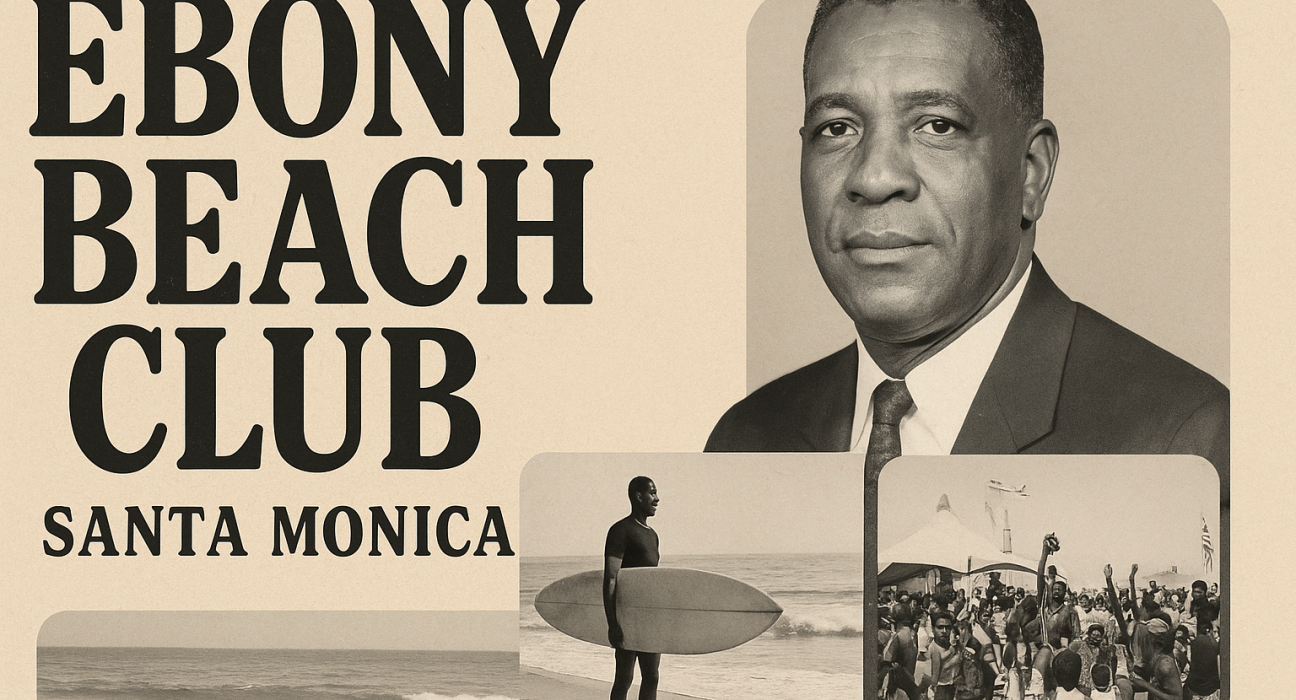Blending its poignant history, cultural resurrection, and current pursuit of justice:
The origin: Silas White’s vision
In 1957, a formidable Black entrepreneur named Silas White purchased the former Elks Lodge building at 1811 Ocean Avenue in Santa Monica with the intention of establishing the Ebony Beach Club—a welcoming beachfront retreat for Black families during the era of segregation Atlanta Black StarEbony Beach Club. He envisioned it as “one of the finest establishments in America for the accommodation and comfort of my people,” with early interest even from Nat King Cole, and over 2,000 prospective members signed up PushBlackKCRW.
The demolition of a dream
White’s dream was short-lived. Within a year, the city seized the property under eminent domain in the name of “urban renewal” and leveled it—reportedly for a parking lot that was never built SEGREGATION BY DESIGNAtlanta Black StarKCRW. The club never opened, White received no compensation, and he passed away in 1962 without seeing his vision realized Mediate.comAtlanta Black StarKCRW.
Movement for restorative justice
Decades later, Silas White’s descendants—supported by the advocacy group Where Is My Land and others—began seeking reparative justice, inspired in part by the successful return of Bruce’s Beach to another Black family PushBlackAtlanta Black StarKCRW.
In March 2024, the White family brought their case before the Santa Monica City Council, arguing the eminent domain action that ended Silas White’s club was racially motivated Atlanta Black StarKCRWSanta Monica Daily Press.
A turning point: mediation approved
In July 2025, the city made a landmark move: the Santa Monica City Council unanimously voted to offer formal mediation with Silas White’s descendants, allocating up to $15,000 for the process, with the family selecting the mediator . This initiative aligns with broader reparative justice efforts underway in the city, including the Landback and Reparations Task Force .
Councilmembers emphasized sincerity in this effort, noting that “the law does not always correlate with justice,” and acknowledging that the city’s historic use of eminent domain disproportionately harmed Black and Brown communities .
Cultural Revival: The Modern Ebony Beach Club
Today’s Ebony Beach Club, led by surf-DJ and community organizer Brick, symbolically revives White’s vision through surf, music, and cultural celebration. In June 2025, the Club hosted a powerful Juneteenth celebration at the Santa Monica Pier, drawing thousands for a full day of surf lessons, live DJs, and Black joy against the Pacific backdrop . Brick described the initiative as “marrying ocean and music in a space of leisure” that honors the original dream .
| Era | Key Highlights |
|---|---|
| 1950s (Origins) | Silas White’s dream for a Black beach club. Authorization, investments, membership buzz. |
| Late 1950s (Demise) | Property seized, demolished—club never realized. |
| Contemporary | Family seeks mediation; city responds with reparative approach. Revival through surf culture and celebration. |
Silas White’s legacy has endured through decades of struggle, cultural resilience, and now hopeful strides toward justice. The modern Ebony Beach Club both honors past dreams and creates space for future healing.
